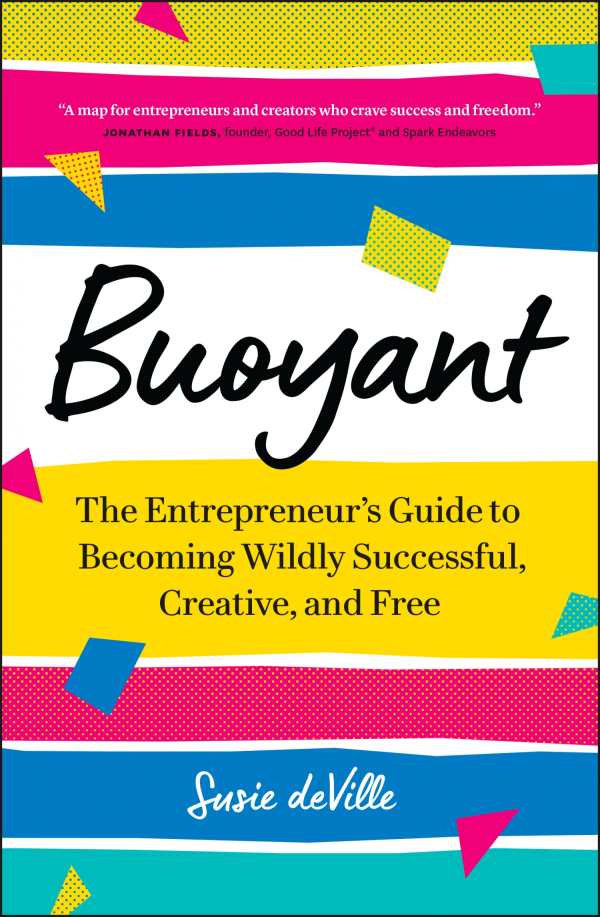Buoyant
The Entrepreneur's Guide to Becoming Wildly Successful, Creative, and Free
The spirited self-help guide Buoyant suggests methods for creative people to avoid stagnation and remain innovative.
Aimed at creators and entrepreneurs, Susie deVille’s career guide Buoyant suggests approachable strategies for developing and maintaining creativity and building successful businesses.
The book begins with a personal anecdote: driven by crushing fear, deVille struggled to gain control over her business and personal life during the 2008 financial crisis. She realized that her commitment to productivity not only drained her but was also not enough to help her remain inspired as an entrepreneur. Drawing on these insights, she shares the techniques that helped her to reconnect with her innermost self, identify what made her unique, and discard her limiting beliefs. These techniques, deVille says, brought joy to her life and transformed her business.
The book also supports its suggestions with other people’s anecdotes, as of a woman who needed help with developing a marketing strategy and building revenue for her business and who was directed to journal, paint, or color; to exercise; and to take up other activities to find inspiration. Another woman was moving from a strong but uninspiring enterprise to a business that she was excited about; the book shows that she was able to execute her successful transition by taking time to self-reflect. It discourages treating complex, stressful business problems as simple, though; it says that fanciful, unrealistic ways for handling such issues should be avoided.
The book’s exercises are designed to silence one’s inner critic and deepen one’s awareness. They include journaling about memories of shame to heal from trauma, taking solo retreats to rest and find inspiration, meditation, physical exercise, and learning. Such methods are accessible and inspiring ways of becoming rejuvenated and finding inspiration, though some—including sketching, journaling, and resting—are repeated throughout without need. Further, though these methods are presented as new and transformative, many are familiar fare; they are not refreshed with the addition of new techniques. The book’s ample use of quotations is also distracting, though individually they are uplifting, discussing places to find inspiration or saying that vulnerability is an element of courage.
Internally, the book’s use of illustrative language (as with an image of a wild iris that grows in acidic soil but flourishes by being close to water, or of wind guiding a boat on the sea that complements a discussion of inspiration and destiny) is effective in showing what creativity and growth requires. And its specific, actionable steps toward creating, developing self-trust, focusing on what is most important, and protecting and feeding one’s creative energy come together in a seamless way. It stands to free people from cycles of merely working more to attain success.
The spirited self-help guide Buoyant suggests methods for creative people to avoid stagnation and remain innovative.
Reviewed by
Edith Wairimu
Disclosure: This article is not an endorsement, but a review. The publisher of this book provided free copies of the book and paid a small fee to have their book reviewed by a professional reviewer. Foreword Reviews and Clarion Reviews make no guarantee that the publisher will receive a positive review. Foreword Magazine, Inc. is disclosing this in accordance with the Federal Trade Commission’s 16 CFR, Part 255.

